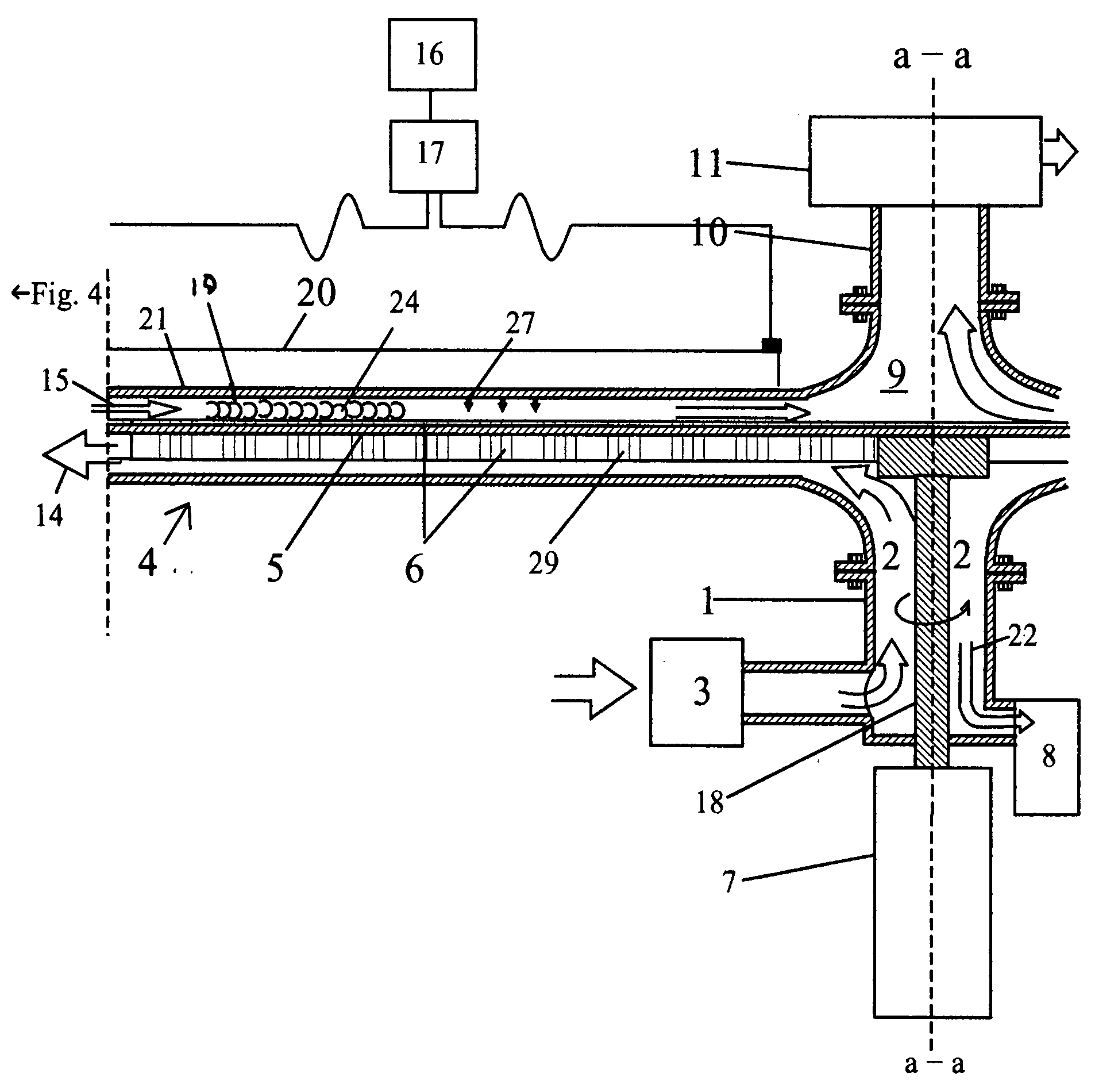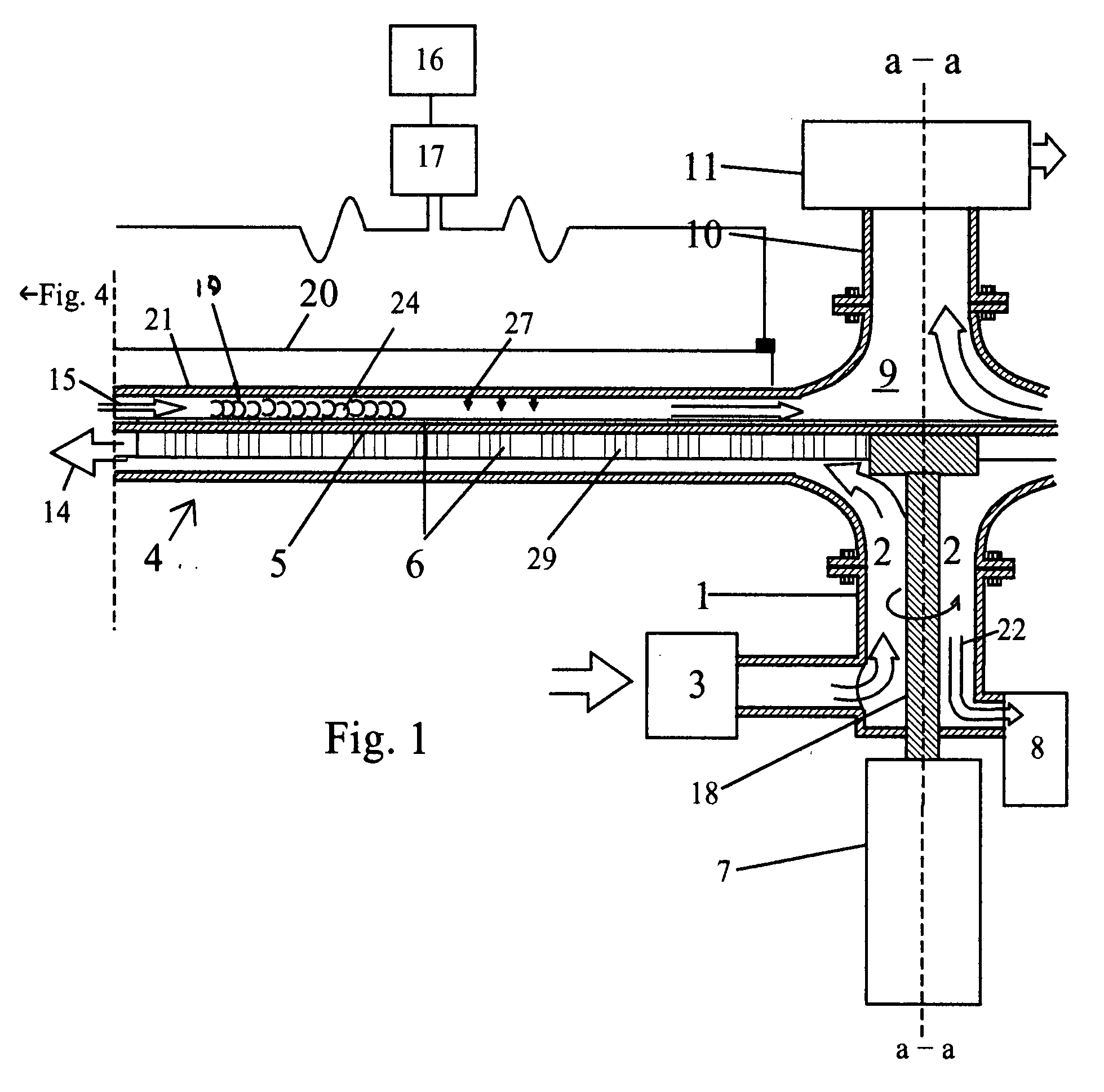Radial counterflow inductive desalination
a desalination and counterflow technology, applied in the direction of electrostatic separators, centrifugal force sediment separation, electrolysis, etc., can solve the problems of high operating pressure, high cost of desalination seawater, and need for extensive pretreatment, etc., to achieve high power efficiency, low cost, and high salinity
- Summary
- Abstract
- Description
- Claims
- Application Information
AI Technical Summary
Benefits of technology
Problems solved by technology
Method used
Image
Examples
Embodiment Construction
[0068]FIG. 1 shows a schematic cross-sectional elevational view of a portion of the preferred embodiment for desalination and for concentrating and crystallizing brine. This device is also suitable for metal recovery from brine. FIG. 4 connects at the dashed line as indicated. Symmetry is about the axis a-a, so there is a missing portion toward the right which is the same as what is shown in FIG. 1 and FIG. 4.
[0069]This embodiment is preferred over the alternative embodiment shown in FIG. 6, which comprises counter-rotating centrifugal impellers, because it is simpler, and does not require large seals. Which embodiment is the best mode of practicing the present invention will depend on the expense and capacity required in particular applications. Simplicity is preferable, and the preferred embodiment shown in FIG. 1 most clearly illustrates the present invention.
[0070]By the term brine is meant a mixture of liquids and conductive solids which may also comprise gases. Brine includes ...
PUM
| Property | Measurement | Unit |
|---|---|---|
| reverse osmosis pressure | aaaaa | aaaaa |
| reverse osmosis pressure | aaaaa | aaaaa |
| reverse osmosis pressure | aaaaa | aaaaa |
Abstract
Description
Claims
Application Information
 Login to View More
Login to View More - R&D
- Intellectual Property
- Life Sciences
- Materials
- Tech Scout
- Unparalleled Data Quality
- Higher Quality Content
- 60% Fewer Hallucinations
Browse by: Latest US Patents, China's latest patents, Technical Efficacy Thesaurus, Application Domain, Technology Topic, Popular Technical Reports.
© 2025 PatSnap. All rights reserved.Legal|Privacy policy|Modern Slavery Act Transparency Statement|Sitemap|About US| Contact US: help@patsnap.com



